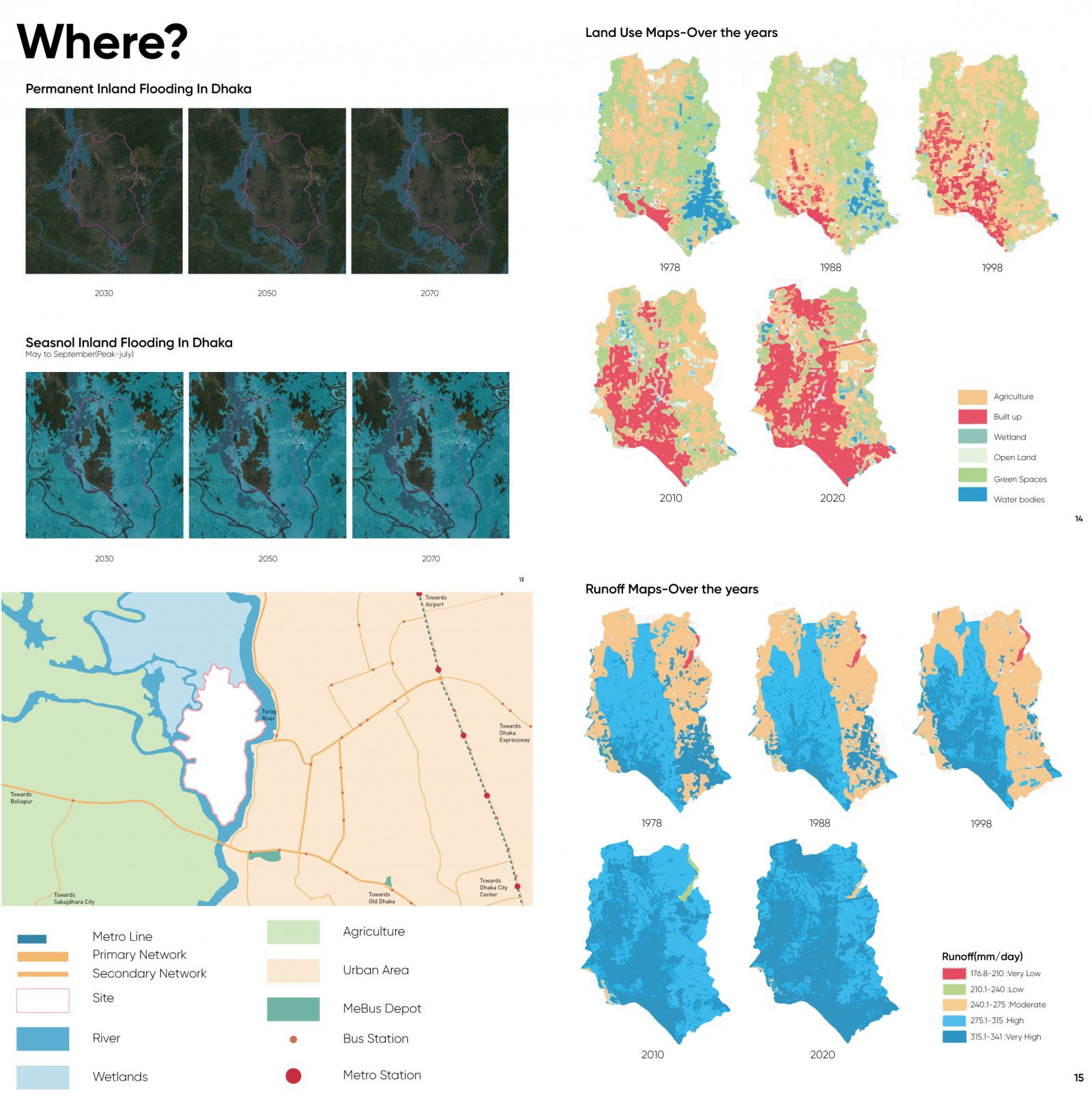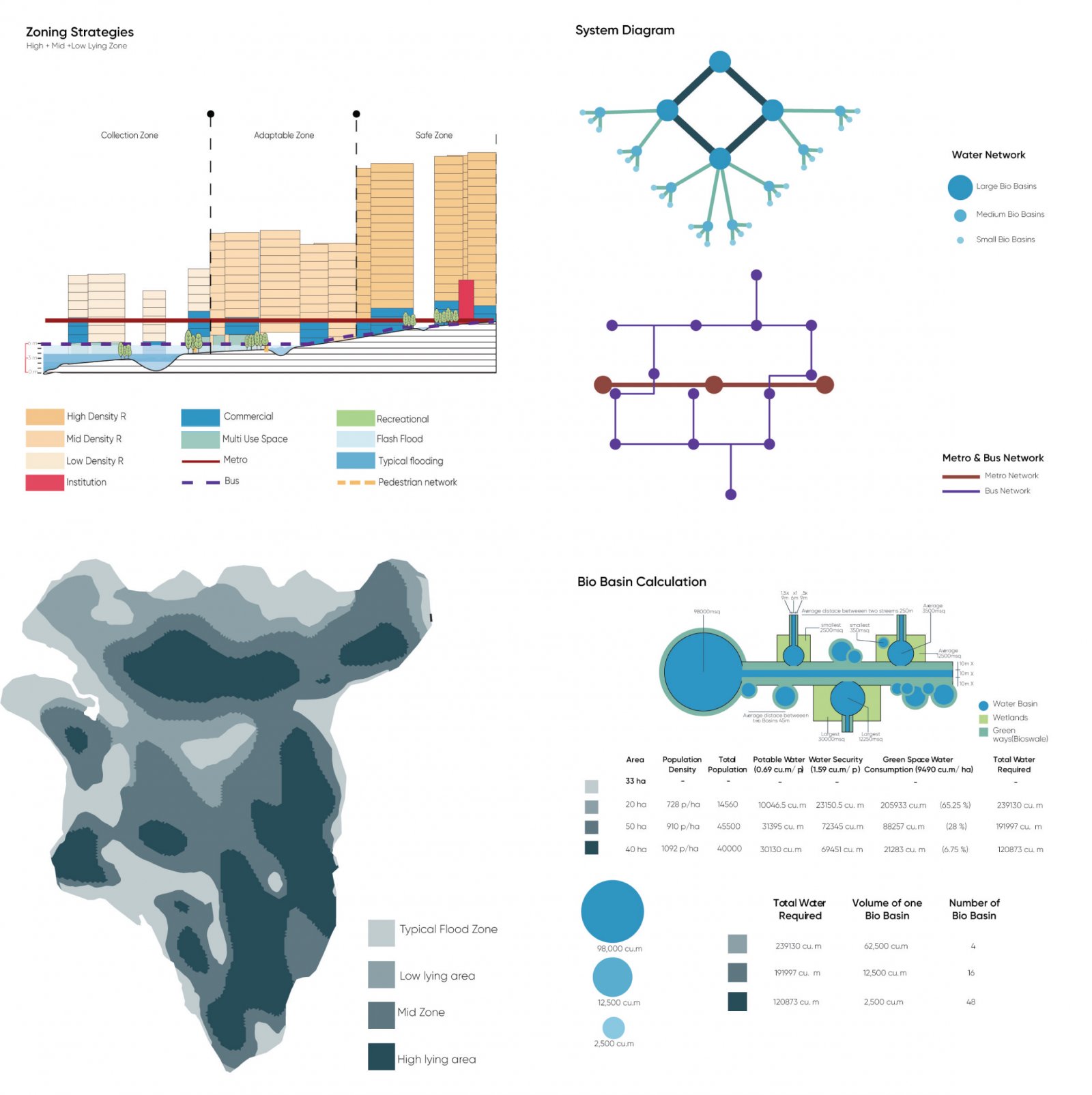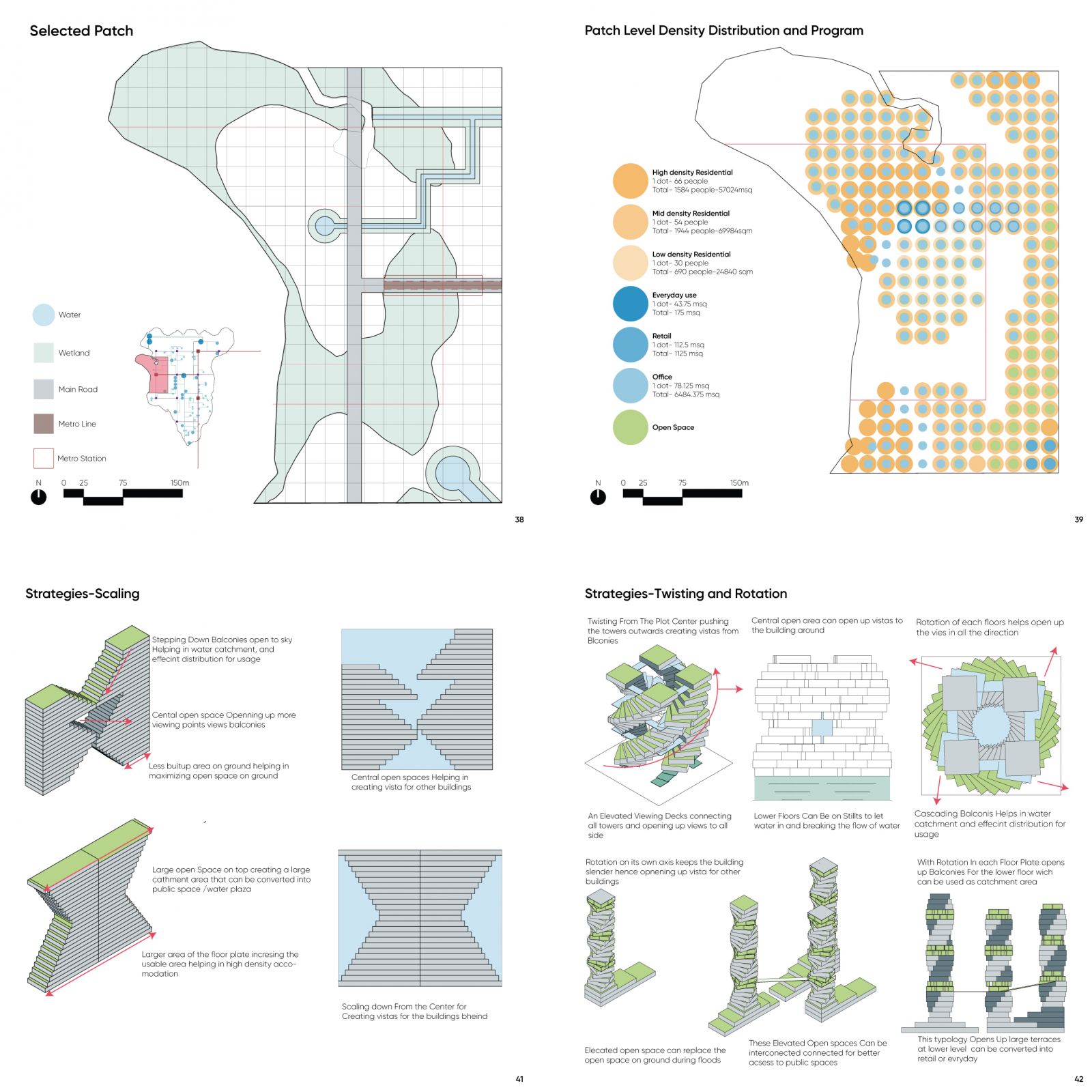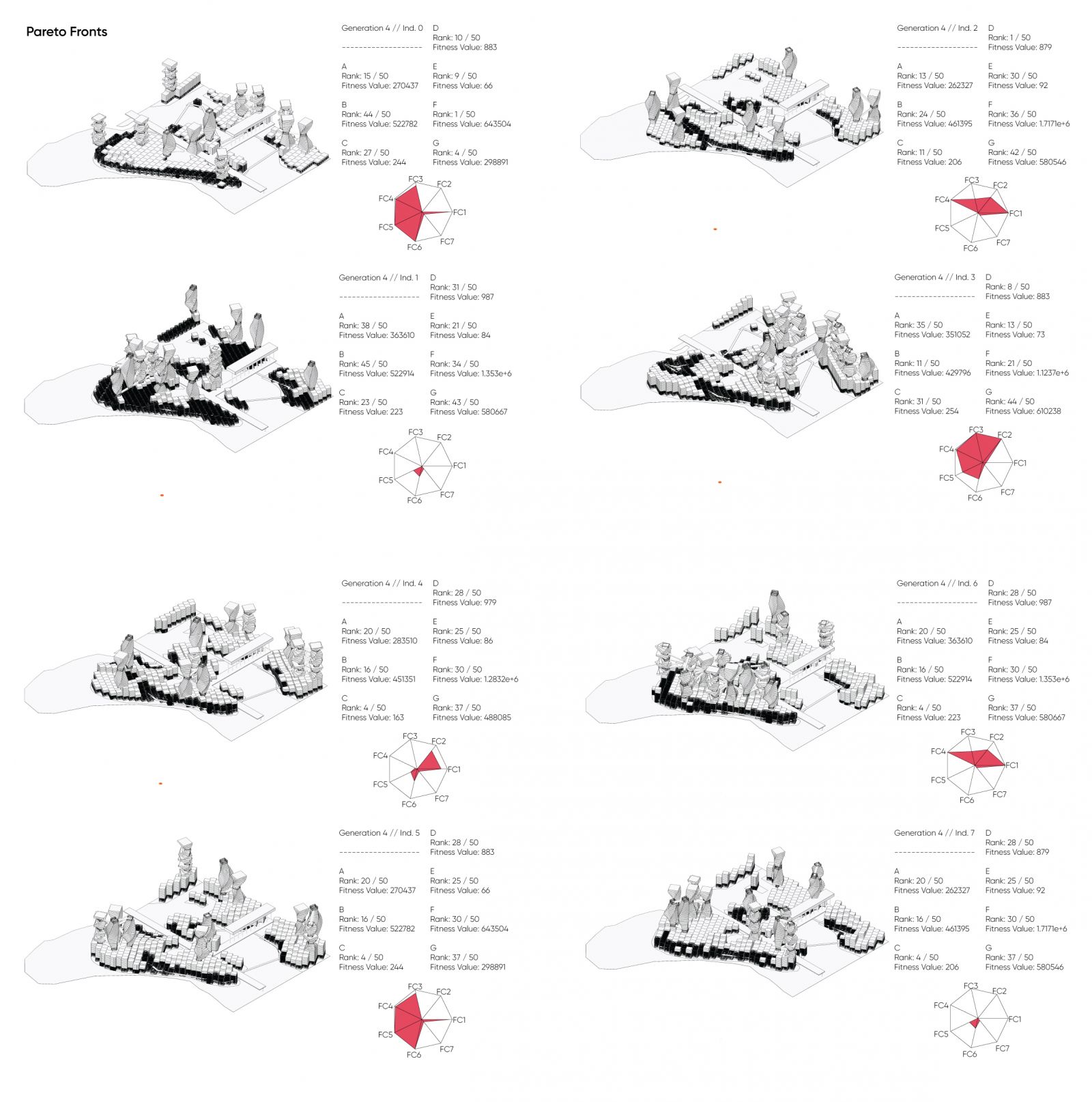Your browser is out-of-date!
For a richer surfing experience on our website, please update your browser. Update my browser now!
For a richer surfing experience on our website, please update your browser. Update my browser now!
The 2071 project delves into the extreme climatic, topographical, social, and economic issues that future cities face. These necessitate novel design solutions for efficient energy, material, and population flows that meet both abundance and scarcity challenges. Interactions in urban tissues are examined to establish generative laws at microclimatic and sociological levels, similar to biological hierarchies (cell, tissue, organ). An evolutionary algorithm is used for iterative design optimization, led by data analysis and various fitness criteria. The methodology stresses logic-based, parametrically defined designs measured against predefined criteria. With a focus on sea level rise and floods, the project reframes excess water as an opportunity rather than a threat. Flood water is Delayed, Stored, and Released by Network and Morphology techniques, Creating Evacuation Routes for community protection.
View Additional Work








.jpg)